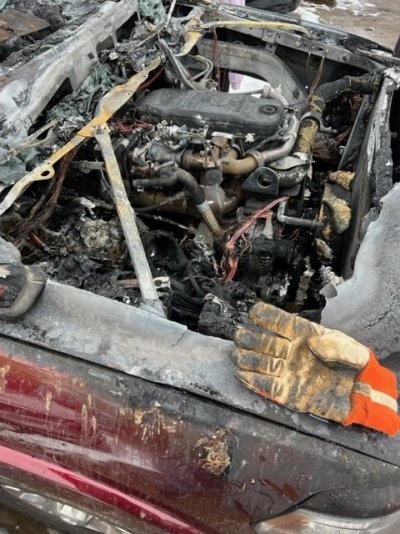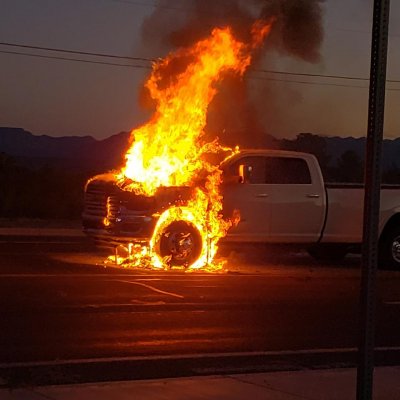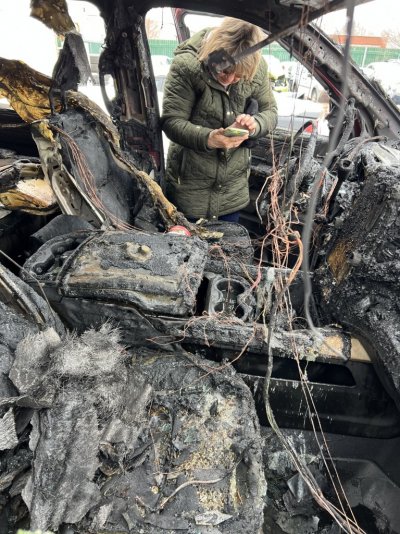While I think it sux that Ram and Cummins chose to save $$$ by going to the CP4, they are the only one to step up to the plate and recall them. Techs doing sloppy work is the issue, but Ram indirectly bears some blame by not paying enough time to do a sanitary job of it.
Is the CP4 less money than the CP3? I have no idea why RAM went to the CP4, for all I know, Cummins could have been the one that made the decision.
But as I understand it, the CP4 failures are more about how the software controls the CP4 pump. Green Diesel Engineering released a white paper describing, in great detail, the differences in how they manage the pump versus the factory software. Of course, the context was the Gen 3 ECODiesel.
Regardless, understanding how the software is involved with the CP4's operation sheds a clear light on how the failures occur. You can find the GDE white paper on just about every ECODiesel site. I can only assume the control software strategy for the CP4 used in RAMs Cummins or ECODiesel is likely the same or some facsimile.
Anyways, here is the white paper from GDE as it appears on many websites.
The CP4 Bosch fuel pump has been in the field since 2008 model year with European OEMs in both 1-plunger (CP4.1) and 2-pluger (CP4.2) configurations. It came to the US market in the 2011 model year used by the North American OEMs. Over the years there have been many failures of this pump due to the plunger rotating in the bore leading to the roller bearing grinding on the cam lobe and sending metal throughout the system. The design of the roller-bearing and cam lobe create inertial force on the plunger to keep it in the proper alignment and it should never rotate if the roller wheel and cam always stay in contact. However, there are situations internal to the pump when there is not enough downforce on the plunger to keep it in contact with the cam lobe. This is the core issue of why these pumps can fail.
Now, let’s discuss the internal operation of the pump. There are three operating modes: MPROP control, PCV control (bleed valve on high pressure fuel rail) and coupled pressure control (CPC). The MPROP is Bosch’s name for the fuel metering inlet valve, this controls how much fuel is delivered to the plunger chamber. During MPROP closed loop control, the PCV is over-closed and MPROP delivers the proper fueling to achieve desired pressure in the fuel rails. This method has been used since 2001 on the CP3 pump and is robust. When the accelerator is released the MPROP closes to decrease flow and the PCV opens momentarily to relieve excess rail pressure as the requested pressure is decreased.
The next mode of operation is PCV control. Here the MPROP is fully open and delivering max fuel to the pump plunger and the PCV regulates the fuel rail pressure in closed loop control by closing only enough to reach the desired rail pressure. The downside to this mode is that the high volume of fuel that is pumped into the rail and then recirculated out thru the PCV consumes a lot of power inside the pump and also generates a higher amount of heat. OEMs generally use the PCV-only control method when fuel temps are cold, in order to heat up the fuel faster. This control strategy is also employed on the CP3 and CP1/CP1H pumps.
On high power-density small displacement applications it is necessary to size the high-pressure pump to meet the fuel flow requirements at rated power. On applications with solenoid injectors there is an additional margin that must be included, due to the constant leakage from the injectors thru the backflow line. However, these small displacement engines have a very low fuel rate at idle which means just a very small flow of fuel thru the metering unit given that the fuel rate is low and also the rail pressure is at its lowest point when idling.
With consideration given to component tolerance, sometimes it is not possible to govern properly via metering-unit only control the rail pressure at idle or when coasting with a max tolerance part. This happens because the metering unit at its very first opening position flows more fuel than is necessary to meet the required demand. In the days of the Bosch EDC16 controller several OEMs would make a switch back to the PCV mode at very low fuel rates including coasting, to let the metering unit be open into a more controllable area.
With the EDC17 era was possible also a new mode called CPC (Coupled Pressure Control). This mode allows to prescribe a desired value for both the metering unit flow and also the rail pressure controlled via the PCV valve, leading both actuators to be under closed loop control via PID-governors (proportial, integral, and derivative components). The purpose of this is to allow the metering unit to operate in a more controllable flow rate but not pay the penalty of power consumption and heat rejection by full PCV mode. You can think of this mode as the PCV one but with lower flow rate thru the metering unit.
The OE calibrations for the EcoDiesel 2014 thru the present (both Gen2 and Gen3) all use this CPC mode as part of their calibration strategy. If you rev the engine while parked with the hood open, as the engine speed comes back to idle is very common to hear a prominent noise akin to gravel in a rock crusher or to an engine with solid lifter camshaft that has an incorrect valve lash. This noise happens as the metering unit flow is varied (via CPC algorithm) thru the pump and generally lasts for a number of seconds, sometimes going away and other times persisting indefinitely.
We surmise that during this transition period of flow rate that the noise is generated by a clearance that forms between the roller wheel and the pump’s camshaft. During normal operation (with the factory calibration), the pump operates in MPROP mode generally when under load but constant makes the transition to the CPC mode in light load and coasting situations. During that transition the MPROP has to make a large change in delivery almost instantaneously, leading to a loss of motion control within the valvetrain of the pump.
In all Green Diesel Engineering tuning we turn off CPC mode for EcoDiesel applications (GEN2 and GEN3). This seems to have significantly reduced potential for the plunger to lift off the cam lobe. Due to a persistent backflow from the solenoid injectors to the tank we find it is not necessary to use the PCV mode for fuel heating. Thanks to additional learning functions inside the software we find it is 100% reliable to run in metering-unit only control in 100% of operation. This eliminates the pump noise you hear in light/no-load transitory operation and offers the least amount of energy to drive pump which aids in fuel economy. Minimizing pressure disturbances internally in CP4 is the best method to maximize fuel pump life and minimize a catastrophic failure.
GDE tunes exhibit a much lower failure rate in the field. The only failures of the fuel system we have heard about entail putting gasoline in the fuel tank, putting DEF in the fuel tank, high water content in diesel fuel or running the system out of fuel (pump loses lubrication).




